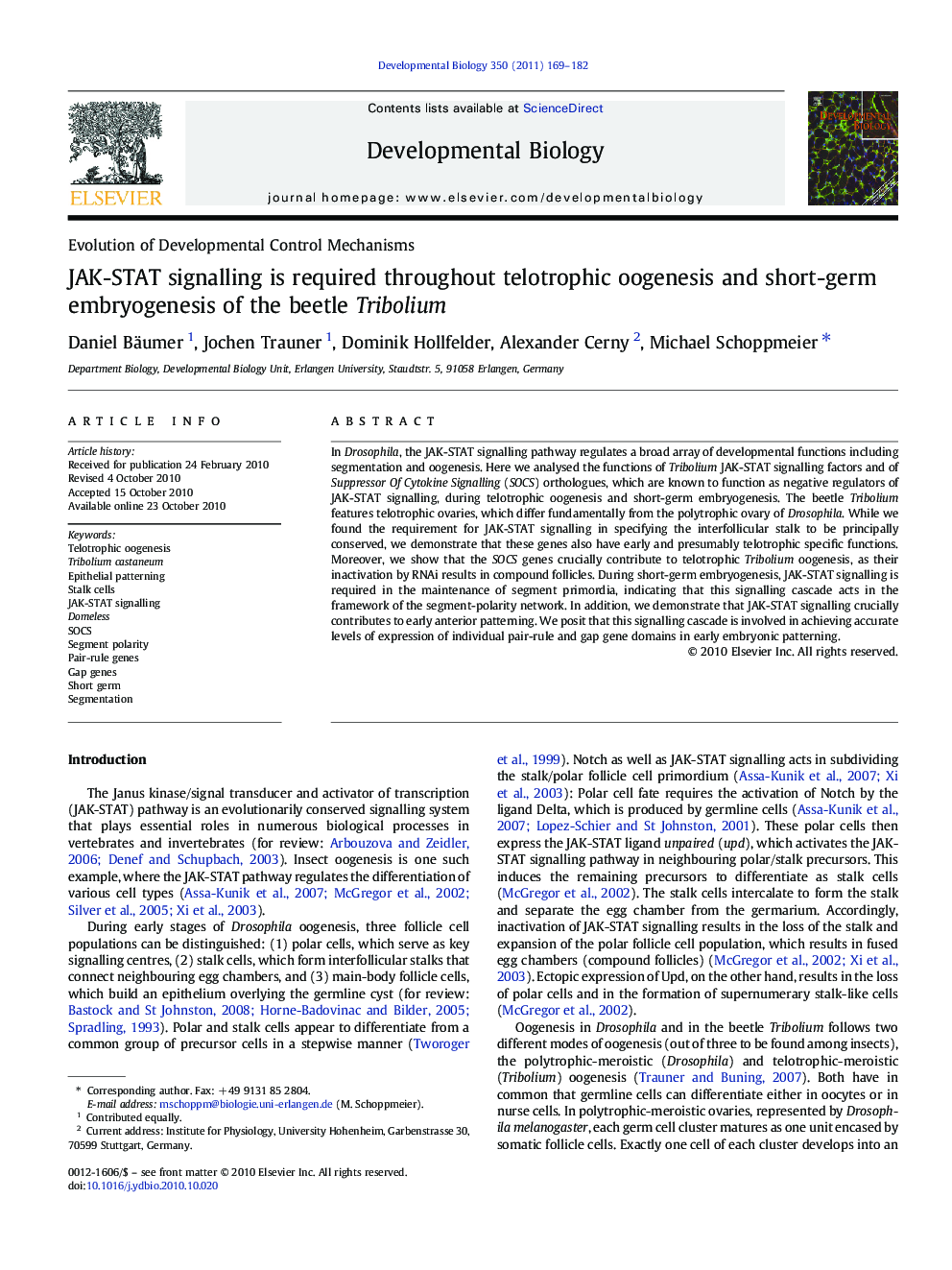| Article ID | Journal | Published Year | Pages | File Type |
|---|---|---|---|---|
| 2173750 | Developmental Biology | 2011 | 14 Pages |
In Drosophila, the JAK-STAT signalling pathway regulates a broad array of developmental functions including segmentation and oogenesis. Here we analysed the functions of Tribolium JAK-STAT signalling factors and of Suppressor Of Cytokine Signalling (SOCS) orthologues, which are known to function as negative regulators of JAK-STAT signalling, during telotrophic oogenesis and short-germ embryogenesis. The beetle Tribolium features telotrophic ovaries, which differ fundamentally from the polytrophic ovary of Drosophila. While we found the requirement for JAK-STAT signalling in specifying the interfollicular stalk to be principally conserved, we demonstrate that these genes also have early and presumably telotrophic specific functions. Moreover, we show that the SOCS genes crucially contribute to telotrophic Tribolium oogenesis, as their inactivation by RNAi results in compound follicles. During short-germ embryogenesis, JAK-STAT signalling is required in the maintenance of segment primordia, indicating that this signalling cascade acts in the framework of the segment-polarity network. In addition, we demonstrate that JAK-STAT signalling crucially contributes to early anterior patterning. We posit that this signalling cascade is involved in achieving accurate levels of expression of individual pair-rule and gap gene domains in early embryonic patterning.
Research Highlights► In telotrophic ovaries, which differ fundamentally from the polytrophic ovary of Drosophila, JAK signalling contributes to follicle cell patterning. ► Also Suppressor Of Cytokine Signalling (SOCS) orthologues crucially contribute to telotrophic Tribolium oogenesis, as their inactivation by RNAi results in compound follicles. ► During short-germ embryogenesis, JAK-STAT signalling acts in the framework of the segment-polarity network. ► JAK-STAT signalling also functions in early anterior patterning. ► We posit that JAK-signalling cascade is involved in achieving accurate levels of expression of individual pair-rule and gap gene domains in early embryonic patterning.
